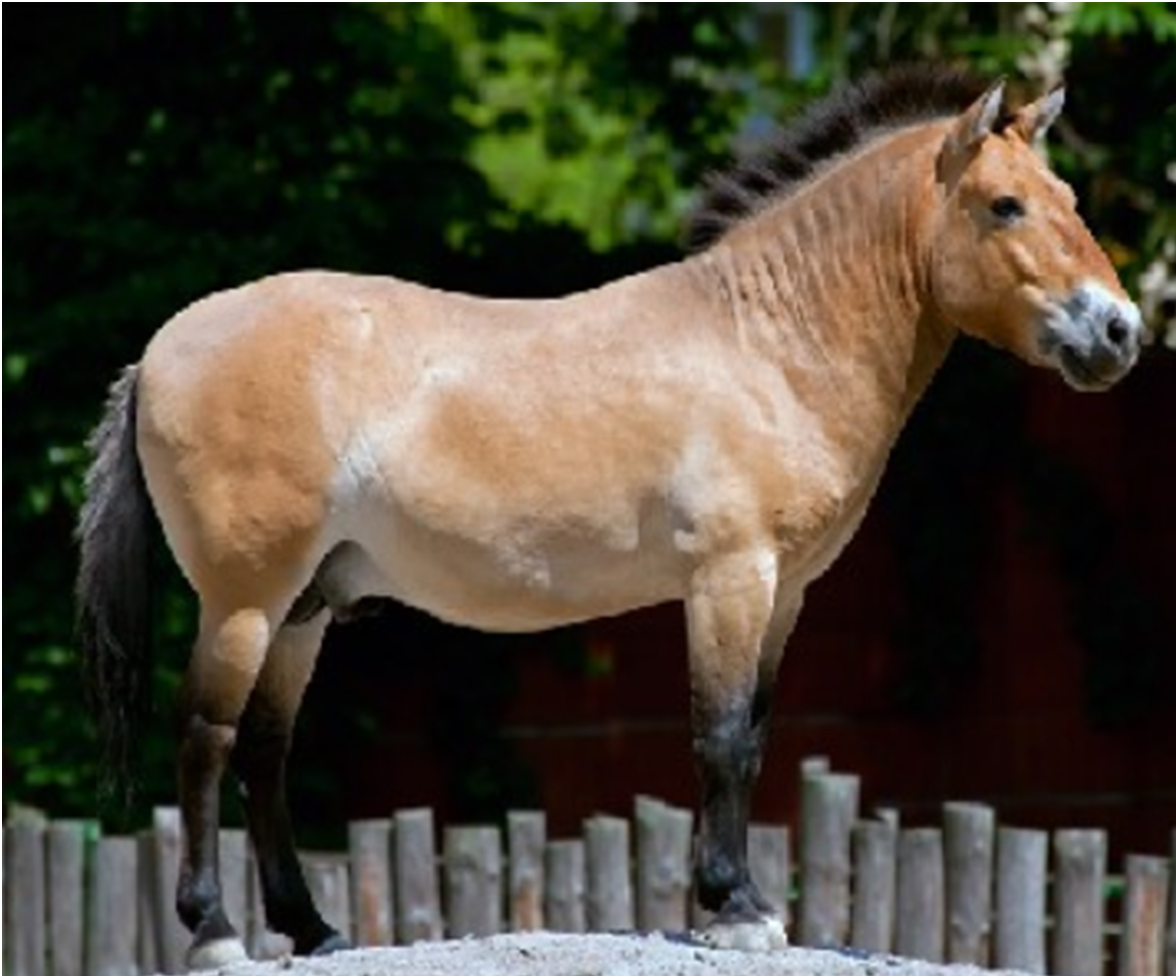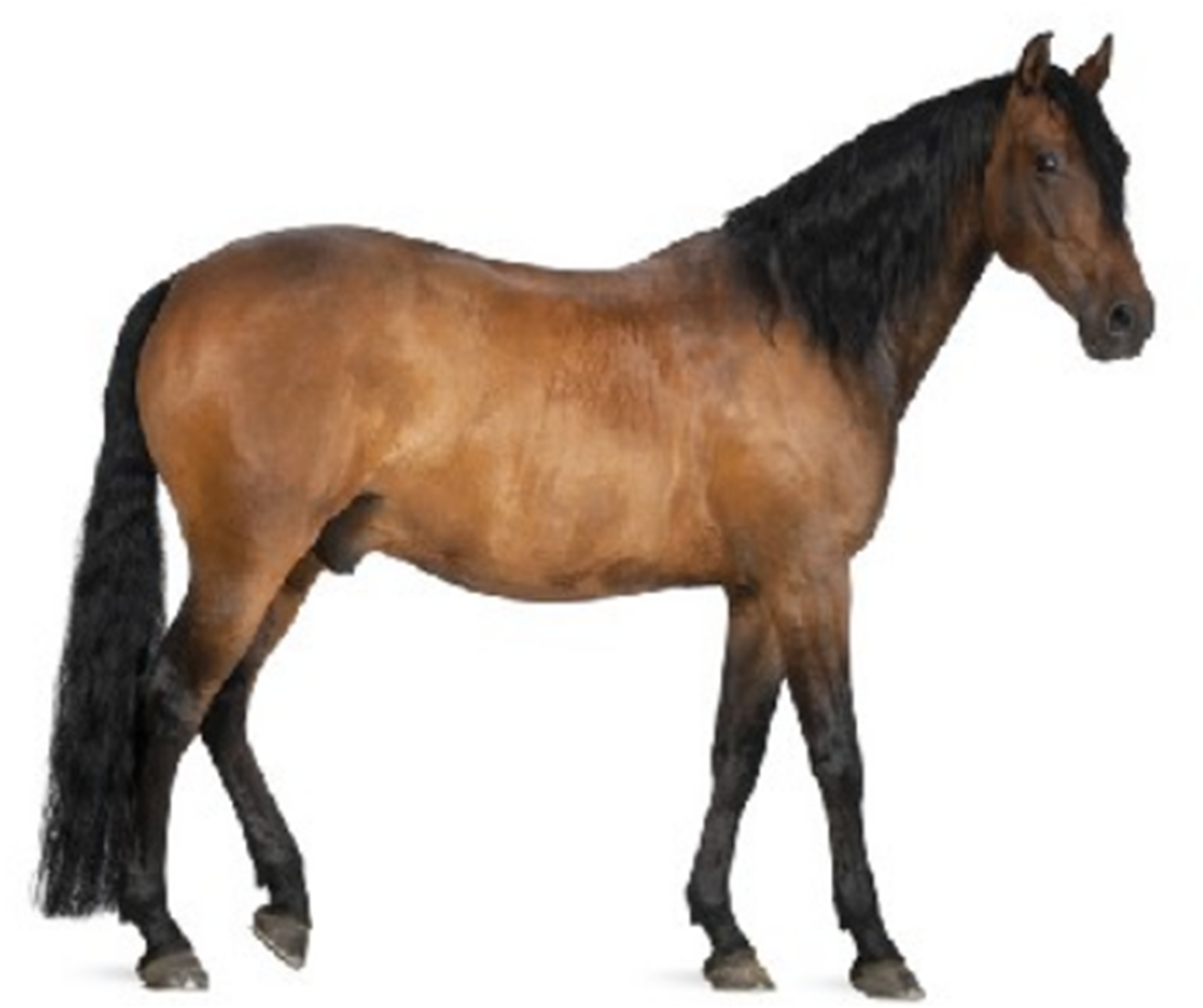第一單元的閱讀練習
閱讀:
Back from extinction – how the Mongolian wild horse was saved
從滅絕-到如何保留蒙古野馬
The Mongolian wild horse is the only truly wild horse still in existence today. Up until 2008, it was declared 'extinct in the wild'. Only the determined efforts of a group of scientists and zoos have allowed this unique animal to be returned to the wild in its homeland of Mongolia. However, its survival is not guaranteed and it is still considered a rare and endangered species.
蒙古野馬是真正的野馬在今天仍再滅絕.直到2008,公告'在野外滅絕'.只有決心的科學家和動物園有合法將這特殊動物回歸到野外在蒙古它們的家鄉.然而它們倖存不能保證仍是被尊重的濒危物種.
The Mongolian wild horse is unique, as it has never been successfully domesticated and remains a wild animal even today. Before the population declined, these horses could be found in many countries in Eastern Europe and Central Asia. The species was first identified and scientifically analyzed in 1881, but there is no agreement about whether it is a full species or a subspecies of the original wild horse. However, there is agreement that it is probably the closest wild relative of the domestic horse. In appearance, the Mongolian wild horse generally has a bigger body than a domestic horse and has shorter legs. Its coat can vary from brown to beige, with a white stomach and dark mane and tail. In the wild, the horses live in small, permanent family units. Each unit has one stallion – the male horse – and one to three mares, or female horses, plus their foals, the young horses.
蒙古野馬是獨特的,它絕不會成功被馴服,甚至到今天也是野生動物.之前人口下降,這些馬應該在東歐和中亞的許多國家發現.這物種在1881第一次被科學家鑑定和分析,但對於他是否是原始野馬的完全種或亞種,沒達成一致.然而有個協議大概是國內馬密切的野生親戚.在外觀上,蒙古野馬通常有巨大身體和長腳比起國內馬.它外皮能變化從棕色到米色,以及白色腹部跟黑色的鬃毛和尾巴.在野外,這些馬固定在小家庭單位生活.每單位有一個公馬和一到三的母馬或雌馬,加上產下的年輕的馬.
During the 20th century, the native population declined because of the harsh climate and human behaviour, such as hunting and using water sources for farm animals. The last herd, or group, of horses was seen in Mongolia in 1967 and the last horse in 1969. No more animals were found in the wild and the species was declared ‘extinct in the wild’. Since 1945, there had been two groups of Mongolian wild horses in zoos in Munich and Prague, but by the 1950s, there were only about twelve breeding horses alive in the world. All Mongolian wild horses alive today are descended from these twelve. In 1977, a breeding programme was started by scientists in the Netherlands and horses were exchanged by the zoos to increase the gene pool of the species.
在20世紀期間,本地人口下降因為嚴酷氣候和人類行為,像是獵殺和使用水源灌溉牧場動物.最後的馬群,在1967蒙古被看見和最後一批馬在1969.在野外沒發現更多動物並公告這物種是‘在野外滅絕’.自1945以來,有兩組蒙古野馬在慕尼黑和布拉格的動物園,但到了1950,只有12頭養殖馬活在這世界上.今天全部活著的蒙古野馬降到12頭.在1977,一個養育計畫由在荷蘭的科學家開始,馬由動物園交換來增加這物種的基因庫.
In 1992, sixteen horses were released into the wild in Mongolia and between 2004 and 2005, another twenty-two horses were released. These horses successfully reproduced and the status of the animal was changed from 'extinct in the wild' to 'endangered' in 2005. As well as the new herds in Mongolia and the horses still in zoos, there are specialized reserves in Ukraine and Hungary where the horses can be monitored and researched for theprogramme . While the Mongolian wild horse remains on the endangered list, its future looks good.
在1992,十六批馬釋放到蒙古野外,在2004到2005之間另外釋放二十二批馬這些馬成功繁殖,並在2005動物狀態從‘在野外滅絕’改變成‘濒危’.除了新一群在蒙古動物園內的馬,在烏克蘭和匈牙利內有專門存量,在這能監測和研究的計畫.而蒙古野馬殘餘在瀕危名單上,未來看是不錯.
Exercise 1: Reading for main ideas
Read the text. Complete the summary using the words in the box.
閱讀文章.完成摘要使用這些文字在框內
The Mongolian wild horse is the closest wild relative of the domestic horse and it comes from Eastern Europe and Central Asia. In the 20th century, numbers declined until the breed was almost extinct. However, with the help of scientists and zoos. the Mongolian wild horse has been saved. Although it is still considered an endangered species, its future looks good.
蒙古野馬跟國內馬是密切野生親戚,來自東歐和中亞.在20世紀內,數量下降直到幾乎滅絕.然而經由科學家和動物園的幫助.蒙古野馬得以保存.儘管仍然是瀕危物種,它的未來看起來不錯.
Exercise 2: Reading for detail
Choose the correct words to complete the sentences.
選擇正確的字來完成句子
1. Mongolian wild horses are unique because [ 選擇 ]
蒙古野馬是獨特的因為 [ 選擇 ]
Choose: they have never been trained to work for humans
他們絕不會被訓練而為人類工作
2. Scientists agree that Mongolian wild horses are [ 選擇 ]
科學家定義蒙古野馬是 [ 選擇 ]
Choose: closely related to the domestic
國內有密切關西
3. The [ 選擇 ] was one reason for the decline in the number of Mongolian wild horses
這 [ 選擇 ] 是蒙古野馬數量下降的一個原因
Choose: very bad weather
糟糕的天氣
4. Another reason for the decline was that the horses' [ 選擇 ] was being used for farm animals.
另一個馬數量下降的原因,是因為使用[ 選擇 ]於牧場動物.
Choose: water
水
5.The last group of Mongolian wild horses was seen in Mongolian in [ 選擇 ]
最後看見蒙古野馬集團是在蒙古 [ 選擇 ]
Choose: 1967
1967年
Exercise 3: Making inferences from the text
Look at the photographs. Match the photograph with the description.
看圖片.批對圖片描述.
1.The first photograph is:
第一圖片是:
Choose: a Mongolian wild horse
一隻蒙古野馬

2.The second photograph is:
第二圖片是:
Choose: a domestic horse
一隻國內的馬

Exercise 4:
Read the text again. Find words and phrases that have the same, or similar, meaning to the underlined words in the sentences. Write the words in the spaces below.
再次閱讀文章.找與換底線的句子相似的單字或短句.寫在空格內.
1.Between 1969 and 2008, Mongolian wild horses were only found in zoos.
1969到2008之間,蒙古野馬只在動物園找到.
Choose: extinct in the wild
在野外面絕
2.Scientists disagree about whether the Mongolian wild horse is a separate breed or part of a larger family of horses.
科學家不同意蒙古野馬是分離品種或大量馬家庭的一部份.
Choose: a full species or a subspecies
完整物種或亞種
3.The number of Mongolian wild horses decreased because of the weather and man’s activities.
因為天氣和人的活動蒙古野馬數量減少.
Choose: human behaviour
人類行為
4.All the Mongolian wild horses in existence today have come from the twelve horses that lived in zoos.
今天全部存活的十二隻蒙古野馬來自生活在動物園裡的馬.
Choose: are descended from
從…傳來
5.The programme used horses from different zoos, as it is important to breed animals that are not related if you want the young animals to be born healthy.
計畫使用從不同動物園來的馬,重點是繁殖不太相關的動物,如果你想要年輕的動物是健康的.
Choose: increase the gene pool of the species
增加物種基因庫
6.In 1992, sixteen horses were set free in Mongolia.
在1992,十六隻馬被釋放到蒙古
Choose: released
釋放